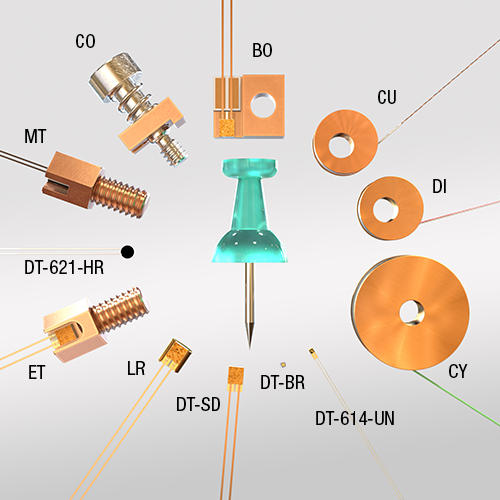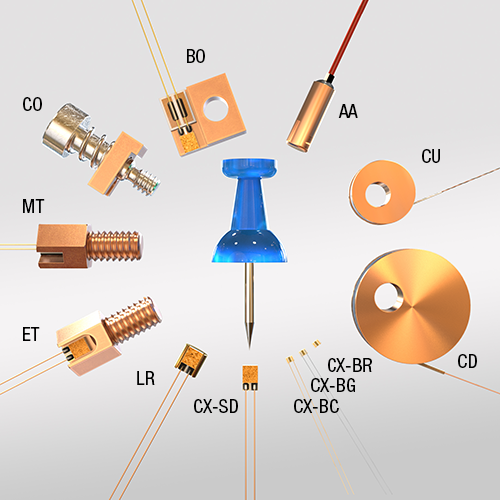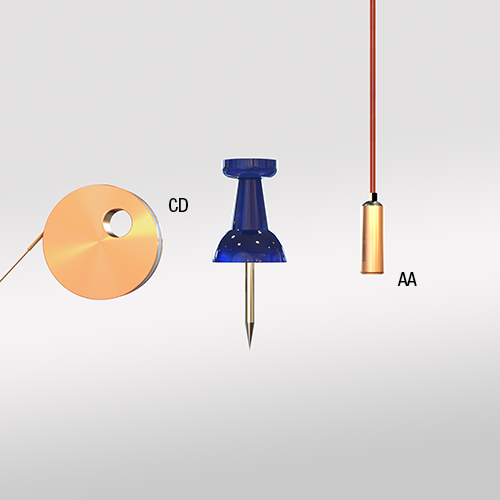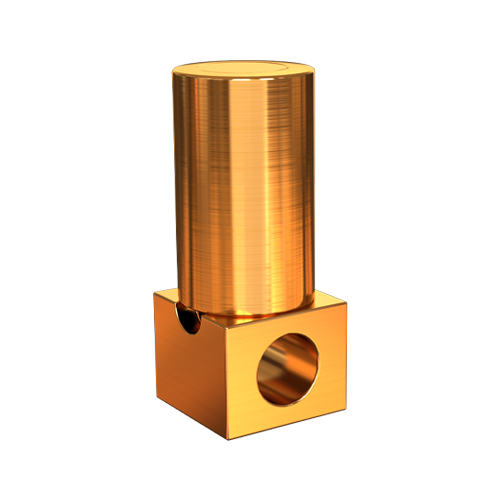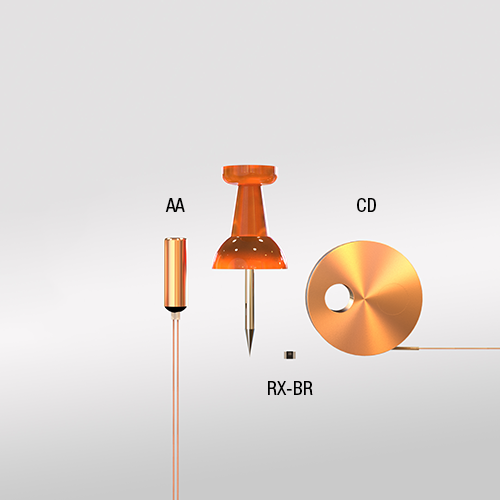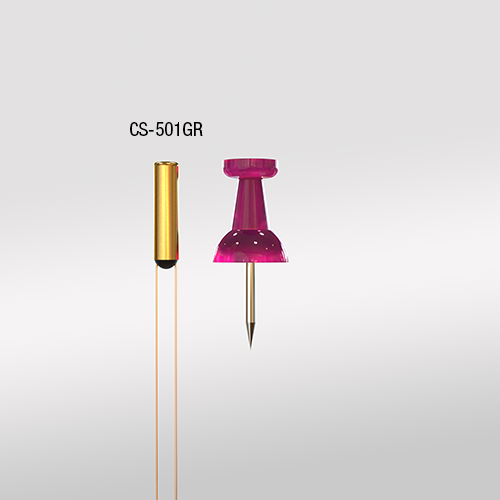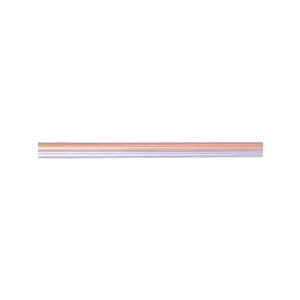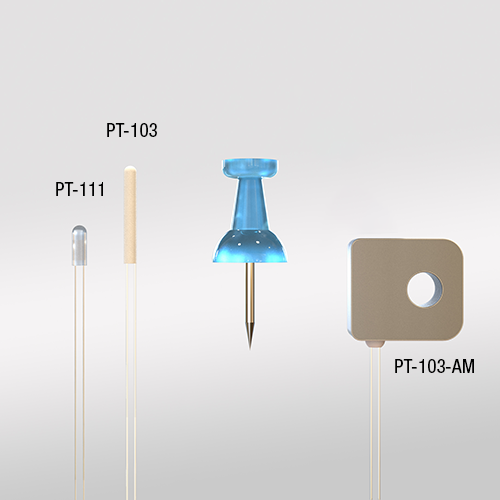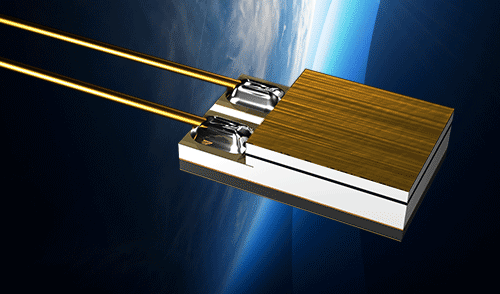Cryogenic temperature sensors

| Temperature range | Standard curve (interchangeable) | Radiation resilient | Performance in magnetic field | Vacuum compatible | Best for | |
| Negative Temperature Coefficient RTDs | ||||||
Cernox® | 0.10 K to 420 K | Best choice for cryogenics | Good to above 1 K | Ultra-high (to 10‑10 Pa) | Wide temperature range; best accuracy and precision in presence of magnetic fields or radiation; different models to maximize sensitivity at various temperatures; most popular cryogenic sensor family | |
Interchangeable Rox™ | 0.05 K to 40 K | ■ | ■ | Good | High (to 10‑4 Pa) | When sensor interchangeability is desired below 1.4 K or in the presence of moderate magnetic fields |
Ultra-low temperature Rox™ | 5 mK to 40 K | Not recommended | High (to 10‑4 Pa) | Temperature measurement below 50 mK | ||
Germanium | 0.05 K to 100 K | ■ | Not recommended | High (to 10‑4 Pa) | Highly stable measurements over long periods of time | |
| Diodes | ||||||
Silicon | 1.4 K to 500 K | ■ | Fair above 60 K | Ultra-high (to 10‑10 Pa) | Great value general-purpose sensor for cryogenic applications down to 1.4 K that don't involve magnetic fields or radiation | |
| Positive Temperature Coefficient RTDs | ||||||
Platinum | 14 K to 873 K | ■ | ■ | Fair above 30 K | High (to 10‑4 Pa) | Accurate and repeatable measurements above 500 K, up to 873 K; affordable sensor for applications where temperatures remain above 14 K |
| Other | ||||||
Capacitance | 1.4 K to 290 K | Excellent | High (to 10‑4 Pa) | Highest control stability when in the presence of massive magnetic fields at cryogenic temperatures; requires a secondary sensor to provide temperature values | ||
Thermocouple wire | 1.2 K to 1543 K | ■ | Fair | Ultra-high (to 10‑10 Pa) | Situations where the temperature exceeds 600 °C (873 K); lowest priced sensor for other temperature ranges, but at the cost of significant loss of accuracy | |
| Specialty | ||||||
HR Series | 20 K to 420 K | ■ | Excellent | Ultra-high (to 10‑10 Pa) | Space applications | |
DT-670-SD features
- Best accuracy across the widest useful temperature range—1.4 K to 500 K—of any silicon diode in the industry
- Tightest tolerances for applications from 30 K to 500 K of any silicon diode to date
- Rugged, reliable Lake Shore SD package designed to withstand repeated thermal cycling and minimize sensor self-heating
- Conformance to standard Curve DT-670 temperature response curve
- Variety of packaging options
- Temperature range: 1.4 K to 500 K
- Bare die sensors with the smallest size and fastest thermal response time of any silicon diode on the market today
- Non-magnetic sensor
- Temperature range: 1.4 K to 325 K*
- Non-magnetic package
- Exposed flat substrate for surface mounting
*Calibrated down to 1.4 K, uncalibrated (Curve DT-670) to 20 K
Cernox® features
- Low magnetic field-induced errors
- Temperature range of 100 mK to 420 K (model dependent)
- High sensitivity at low temperatures and good sensitivity over a broad range
- Excellent resistance to ionizing radiation
- Bare die cryogenic temperature sensor with fast characteristic thermal response times: 1.5 ms at 4.2 K, 50 ms at 77 K
- Broad selection of models to meet your thermometry needs
- Excellent stability
- Non-magnetic package options available (AA, BC, BG, BR)
- Variety of packaging options

Temporarily unavailable — please consider Cernox® as an alternative
Germanium features
- Recognized as a “Secondary Standard Thermometer”
- High sensitivity provides sub-millikelvin control at 4.2 K and below
- Excellent reproducibility better than ±0.5 mK at 4.2 K
- Various models for use from 0.05 K to 100 K
- Excellent resistance to ionizing radiation
ULT Rox™ features
- Calibrations down to 5 mK
- Readings from 5 mK to 40 K
- Optical shielding reduces unwanted sensor heating
RX-102A features
- Standard curve interchangeable
- Good radiation resistance
- Useful down to 50 mK
- Low magnetic field-induced errors
RX-202A features
- Standard curve interchangeable
- Good radiation resistance
- Monotonic from 50 mK to 300 K
- 4× improvement in magnetic field-induced errors over other ruthenium oxides
RX-103A features
- Standard curve interchangeable
- Good radiation resistance
- Best choice for interchangeability from 1.4 K to 40 K
- Low magnetic field-induced errors
Capacitance features
- Virtually no magnetic field-induced errors
- Capable of mK control stability in the presence of strong magnetic fields
- Monotonic in C versus T to nearly room temperature
Thermocouple wire features
Type E (Chromel-Constantan)
Has the highest sensitivity among the standard thermocouple types typically used at low temperatures—the best choice for temperatures down to 40 K.
Type K (Chromel-Alumel)
Recommended for continuous use in inert atmospheres. Has a sensitivity of 4.1 mV/K at 20 K (about ½ of Type E).
Platinum features
- Temperature range: 14 K to 873 K (model dependent)
- Available as a traditional wire-wound package or a bolt-down adapter
- Conforms to IEC 751 standards for platinum sensors
- High reproducibility: ±5 mK at 77 K
- Low magnetic field dependence above 40 K
- Excellent for use in ionizing radiation
- Calibrated options for sensor groups with a single curve
HR Series sensor features
- Full material traceability for 15 years
- Resistance and sensitivity data available for all sensors
- Reduce lead time
- Gain confidence from our test protocol
- No hidden costs—pay only for the sensors you buy
What is a cryogenic temperature sensor?
Cryogenic sensors are thermometry devices specially engineered for the rigors of low-temperature environments and include versions for measurements down to 10 mK. They can also be designed to withstand wide temperature ranges and UHV applications.


